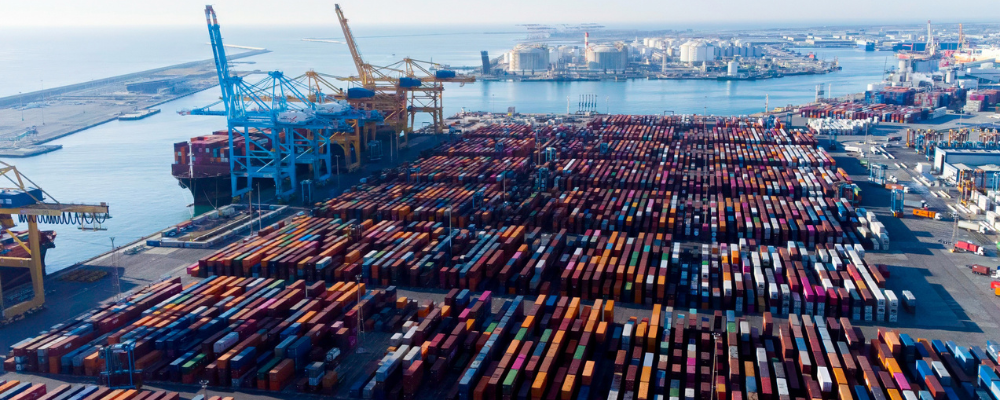Trade policy is shifting again, and construction firms are seeing the impact. In early 2025, the federal government expanded tariffs on building materials including steel, aluminum, lumber, and gypsum. Key trading partners have been affected, and these changes are increasing costs as well as making it harder to plan ahead.
This is happening at a time when supply chains are still vulnerable to disruption and demand across the industry is still strong. For construction firms, the issue isn’t just rising prices; it’s the uncertainty. A policy change can delay procurement, limit material availability, and tighten budgets that are already under pressure. The firms that stay flexible and adapt quickly are the ones best positioned to protect margins and keep projects moving forward.
New Tariff Policies
The latest round of tariffs builds on earlier trade measures but expands their reach. A general 10% tariff now applies to a wide range of imported goods, while key materials like steel and aluminum face a 25% duty. These changes are affecting both raw materials and finished products, including framing, doors, and window systems.
The impact varies depending on where materials are sourced. China faces the most aggressive measures, with tariffs on certain goods reaching up to 145%. That increase has the potential to severely affect contractors and developers that import power tools, equipment, or ready-to-install building components from that region.
Mexico and Canada have partial exemptions under USMCA, but a substantial portion of their exports to the United States remain under a 25% tariff. Canadian lumber, in particular, has been a recurring subject of trade investigations and could face added taxes in the coming months.
These changes are expected to raise costs and complicate planning. Firms that once relied on international partners are reevaluating those relationships. Pricing future projects, negotiating contracts, or securing long-term supply agreements has become more challenging across the board.
Key Challenges Facing Construction Firms
Rising Costs — Tariffs are reintroducing cost volatility into a market that was just beginning to stabilize. In the early part of 2025, nonresidential material prices rose at a 9% annualized rate as contractors accelerated procurement to stay ahead of anticipated increases. Overall, construction input costs are now 41% higher than they were in February 2020, according to data from Associated Builders and Contractors.
For firms working with tight margins or fixed-price contracts, even modest increases can have an outsized impact. A commercial project with $2 million in material costs, for example, could see an additional $200,000 in expenses if tariffs raise prices by just 10%. These added costs are often difficult to pass through, especially on public-sector jobs with rigid budgets or long approval cycles.
In response, some contractors are accelerating procurement to secure pricing early. While this can help manage risk, it also requires strong cash flow and storage capacity, which is not always feasible, particularly for smaller firms.
Supply Chain Disruptions — Tariff changes are also adding new strain to supply chains. As duties rise on steel, aluminum, and other materials, many contractors are facing longer lead times, tighter availability, and higher logistics costs. Shipments that once cleared customs quickly may now be delayed by inspections or port congestion, which can throw off just-in-time strategies and increase costs.
These delays can affect everything from foundational materials to specialized equipment. Construction teams may need to adjust timelines or make trade-offs that impact budget and scope.
Still, the global supply chain is more resilient than it was just a few years ago. The pandemic introduced new flexibility, and many firms now use technology to forecast demand and manage inventory more effectively.
Economic Conditions — Tariff challenges are developing alongside an unpredictable economy. Although inflation has cooled to an extent and interest rates have hovered at moderate levels, GDP growth shows signs of slowing, and skilled construction labor is still scarce. Many small and midsize firms are particularly vulnerable to these headwinds.
Even so, the construction industry remains strong overall. Dodge Construction Network is forecasting 10% growth this year. Residential real estate appears to be the most exposed to current conditions, with builders estimating that tariffs will add about $9,200 to the cost of a new home. Areas like data centers, education, and healthcare are showing greater resilience.
Strategies to Stay Ahead
What can construction firms do to mitigate the risks associated with the tariffs? Many businesses are adopting proactive strategies:
Scenario-Based Budgeting — Tariff updates are moving quickly. Build best-case, moderate, and worst-case tariff scenarios into project budgets to prepare for cost swings and disruptions.
Diversify the Supplier Base — Relying on a single source can be risky. Identify alternate vendors and increase reliance on U.S.-based suppliers where feasible.
Renegotiate Contracts — It may be time to revisit supplier agreements and build in clauses that address tariff-related changes. Examples include a provision for pricing protections or escalation clauses.
Rethink Inventory Strategies — Implement systems to monitor material usage and delivery schedules. This helps avoid over-ordering, reduces waste, and minimizes last-minute purchases at premium prices.
Leverage Technology — Analytics and accounting tools can help track pricing trends and supplier reliability. This helps firms evaluate options when making purchasing decisions.
Looking Ahead
Tariff uncertainty isn’t going away, but construction companies can take practical steps to stay ahead of the disruption. Agility, informed decision-making, and strong financial planning will be essential as trade policies continue to shift. For support in navigating the financial implications for your construction firm, contact Jennifer French, Partner on PBMares’ Construction & Real Estate team.






